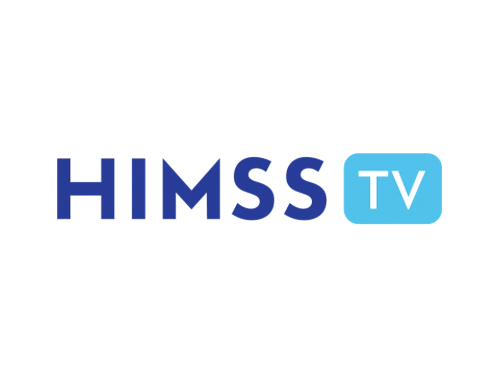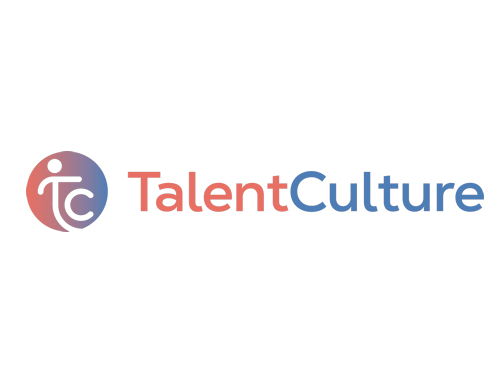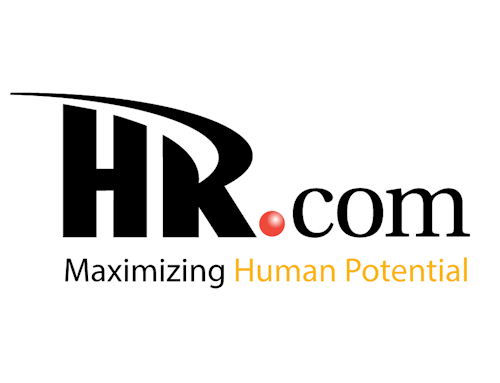
John McGowan of HubSync discusses artificial intelligence and its role in the tax field.
David D. Stewart: Welcome to the podcast. I’m David Stewart, editor in chief of Tax Notes Today International. This week: Friend or foe?
Artificial intelligence has been a bit of a hot topic in the last few months, and it doesn’t look like it’s going away anytime soon. From ChatGPT to other large language models, people in all professions are turning to these tools for help. But for those in the tax space, there’s still hesitation about how well these models can work with the technical materials. However, there are also those who believe that these models will be a useful tool in the tax space, provided the right training and use.
So what role can AI play in tax, and will it assist or replace the humans already working in the field?
Joining me now to talk more about this is John McGowan, CEO of HubSync, a tax and accounting platform. John, welcome to the podcast.
John McGowan: Thank you, Dave. Glad to be here.
David D. Stewart: Could you start off by telling us a bit about yourself and your company?
John McGowan: Absolutely. Yeah, so my background is tax and technology. I was a CPA, started at KPMG and slowly kind of grew into different technology roles, but was always very passionate about technology and automation. Started doing that very early in my career; was at KPMG for about 20 years and ran their tax technology practice. So built all sorts of tools across all different types of tax, whether it’s federal tax, state and local, international. Had a great run at KPMG, did a lot of really innovative things there.
And then I was at Deloitte in a very similar role running their tax technology practice for about five years. Did a lot of innovative things in the Big Four, and about mid [20]18, I just saw a big opportunity to take some of the great things I had built at both Deloitte and KPMG and bring it out to the market in the industry.
So we formed HubSync in 2018 and [began] building out an end-to-end automation platform and serving a lot of great CPA firms in the industry and having a great time. It’s an exciting time in the industry, especially with this topic. With [generative] AI starting to explode this year, there’s lots of great technology innovations and things happening that can help CPA firms.
David D. Stewart: Well, yeah. Let’s get into the topic at hand: What are your thoughts about this new world of generative AI?
John McGowan: Well, it really is just exploding. I mean, it’s phenomenal to see. AI’s been around for a while. I did quite a bit with AI at both Deloitte and KPMG, but within GenAI it’s — you’re just seeing a huge explosion, and this is now becoming a lot more accessible to the average consumer with ChatGPT, text generation, and automation. It’s really possible now. It’s really phenomenal what we’re seeing.
And in terms of this industry, tax and accounting, I think there’s just a huge opportunity to automate a lot of manual tasks that we continue to see in the industry — paper and other manual tasks. Whether it’s preparing a tax return or an audit, there’s still a lot of manual steps that are required for a firm to work with a client.
We’re trying to automate a lot of that with HubSync and really see with AI now an opportunity to take some of those mundane tasks and automate more of them so that the CPA provider can really be a consultative adviser to the client and do less of some of the data wrangling and traditional manual tasks that we’ve seen in the industry.
David D. Stewart: I just realized that we should probably just take one quick step back, and could you define for us this term, generative AI?
John McGowan: Absolutely. So really what’s happening now with GenAI is the ability to generate text, and you’ve got these large language models now that have been trained. So typing in queries and being able to write letters and blogs.
We have an engagement letter wizard, which builds engagement letters, and we’re embedding AI into that now. You can actually generate paragraphs, you can help with review of risk-approved paragraphs. There’s a lot of opportunity now with text. You can actually now interact with systems in a more human way — so being able to type in queries into a business intelligence engine, just asking more simple questions from a business perspective and having visualizations come back to you based on questions that you’re asking.
I was talking to my CRO [chief revenue officer] yesterday and told them about some integrations that we could do with our CRM [customer relationship manager] system where you can literally just type something into a natural language prompt and say, “Hey, download all of our contacts out of our CRM system and put it into an Excel spreadsheet.” So these types of conversational questions you can now put into these systems and you can actually generate results using AI.
We’re really excited. We also think that AI can really be kind of a copilot, if you will. We see this with our developers now as we code our products. We’re getting suggestions from GitHub copilot on making the code better. We like this idea of AI being a copilot.
People get scared about, “Is AI going to replace a human?” We don’t think that’s going to happen anytime soon at all, and we always feel like there’s going to be a human in the loop, but the idea that a person becomes less of a creator of content and could become more of an editor of content that’s generated from ChatGPT, we see those types of opportunities emerging with this technology.
David D. Stewart: Now, I know we have, even on this show, played around a bit with the ChatGPT to see what it can do. What really do you see as its strength in being used as a tool?
John McGowan: The areas that we’re seeing that we’re really implementing inside of HubSync right now — so I mentioned our document generation tools, so being able to use GPT to generate paragraphs, texts, help with automated review and redlines of documents as well.
The other area that we see as a huge pain point in the industry is just search. Having AI-assisted search where you’re not having to do your traditional full inquiries within five paragraphs and complicated queries, and really getting to AI-assisted search, where you’re typing more conversational questions and getting search results back.
Discovery of information is much easier with this technology. I mentioned the AI Power BI as well, being able to type in more natural language query. We’re implementing this in HubSync now, where a client could log in to a firm portal and start asking questions about their tax liabilities, about their tax positions, and getting answers back from this technology.
And the other thing that’s big in this industry is API [application programming interface] integration, which can be very complex, pushing data between different systems, between tax software systems. But again, this is now becoming more accessible, where you could type in, “Hey, I would like to have these types of integrations happen between systems,” so more of a business user can actually ask some of these questions and have some of this API magic happen behind the scenes without them needing to be a programmer.
And I think the other big pain point that we see consistently in the industry is just data collection, right? Collecting data from the client, whether it’s in a [Form] 1040, you need to get OCR [optical character recognition] data from W-2s and 1099s, or if it’s a corporation, you’re getting large trial balances and Excel data. A lot of time is spent on the audit and tax process doing what I call data wrangling.
We feel with intelligent document processing, which helps move beyond traditional OCR and really classify and lift data off of tax forms, for example, and the ability to take large volumes of data from a trial balance, for example, and be able to use machine learning to auto-map trial balances — so you don’t have a human going in there manually mapping trial balances, but you’ve got a machine-learning engine that’s helping with that — these are the types of things that are really going to save time in the industry and really make the CPA firm more efficient and really allow them to better service their clients.
David D. Stewart: Now, we’ve discussed sort of the promise of AI, and I’m actually curious about the perils here. What are the limitations of using these sorts of systems? What should we be watching for?
John McGowan: I think the one thing that we’re consistently hearing is — I’d say as I talk to clients about this, “We’re kind of in an experimentation phase,” and I think one of the things that folks are concerned about, and you see companies banning or limiting use of ChatGPT because of issues like putting PII [personally identifiable information] or confidential information, PCI [payment card industry] information.

So that’s a big concern; you don’t want to have customer data leakage going into these open models. So what we see the Big Four and other firms doing now is they have their own environments with their own models — proprietary models that are secure.
So security is a big thing, ethics, but being able to ensure that customer data is not leaking into these systems is a real topic that we’re talking about with our clients. We see some interesting start-ups emerging in this area that are really focused on this topic.
One I was talking to yesterday built an AI firewall that will block any PII or PCI information from going into an open model. It’ll track all traffic that’s going from a corporation into an open model. But what we’re seeing again is now these firms are building their own models and their own infrastructure and using client data in a secure way versus pushing this data into an open model.
So we see that as a big issue. I think the other thing is just lack of transparency. We’ve heard the story about a court case that was invented by AI, so the answers that you’re getting back, if you’re doing tax research or any kind of research, you still need to make sure that you’re validating the results coming back from these models with actual court cases, citations, tax law, etc. You can’t just accept the answers that are coming from these systems.
And I think the last thing is just around bias. There’s a concern about the models can get biased based on the data that’s being fed to them. So these are some of the issues that we’re talking about with our clients, and I’d say there’s some level of trepidation around using some of these models for these reasons.
David D. Stewart: I actually am kind of curious about how you navigate that world. I’m interested in the idea of this AI model as a black box where you put a prompt in and an answer comes out the other way.
And as with any kind of automation, the automation is fantastic until it breaks down. So what do you do to police that to make sure that you’re not over relying on it?
John McGowan: I think this gets into, what does proper integration look like? You can’t just hand over this data to a model, do a review of it, and then just let it go and let people use it. I mean, there’s a couple steps here.
One is ensuring you look at the front end of this in terms of data preparation and the data that you’re putting into the model. That would include things like anonymizing the data. The company that I mentioned yesterday also can dynamically redact data as it’s going into a model as well. So there’s this data preparation phase.
Typically, the next phase is training. You’re getting someone with some experience [in] data science. This comes back to this human in the loop. You want to be able to train the model. And then what’s most important is continuing to test the model and revise it, and it’ll continue to learn as more data has flowed through it.
But this requires constant supervision — continual testing and supervision. You just can’t kind of throw these models over the wall and let people use them. There’s a lot of preparation involved in ongoing maintenance to make sure these models are being used correctly.
David D. Stewart: Now, we’re seeing a lot of major investment into this space. Is this a trend that you’re expecting to continue into the future?
John McGowan: I really think so. I listened to Eric Schmidt, the former CEO of Google, talking about this, and there’s always this discussion around fear, around AI, etc., but he said, “Folks should be running to this.”
And I agree with that sentiment. I think this is here to stay. I think there’s a lot we’re still learning about utilizing this technology in a secure manner, as I mentioned before, but I think all firms in this industry should be looking to this as an opportunity to elevate the industry and not be scared of it.
And so I am really excited about what’s happening, and again, as I said earlier, just making some of this technology more accessible to the average business user and also just allowing the professional to become an adviser to the client, which is what we consistently hear.
We have a talent shortage in this industry, as we all know. Folks don’t want to come out of college and do data wrangling and manual entry of data into tax return software. So I also really see this as an opportunity to elevate the industry and allow the professionals to do what they’re best at, which is advising clients.
David D. Stewart: Now, you’ve alluded to some of the ethical quandaries that come up in this space, and one question that strikes me is — especially from a third-party provider aspect — how do you prevent the information being provided by, let’s say, one client’s dataset merging into another client’s dataset? Is there some way of separating them out, or does the AI just learn from all of them all the time?
John McGowan: Well, this is where, as I mentioned, some of the anonymization and redaction can come in to help with that. The firms and HubSync house tax return data; you need to use that data properly. This is a heavy topic of discussion in the Big Four around not using client data without consent for certain purposes, whether it was testing or other things. So the client is entrusting their data to you to do a tax return or to do an audit, and you need to take great care in managing that content and that data and ensure it’s not being used improperly and that it is being used securely.
So again, some of what we’re seeing with vendors that are working in this space is anonymization and redaction of data as it’s going into some of these models, and then kind of merging it back with some of the data when it comes back into the secure environment.
So there’s some techniques that are emerging to help with this, but it’s a serious issue, and one that our firms and we are taking seriously in terms of client confidentiality, ensuring that there’s no data leakage at all with the data that the firms are hosting or that any of the software providers are hosting.
David D. Stewart: Is there any concern that this is going to create more of an uneven playing field since larger organizations are going to have access to a significantly larger dataset?
John McGowan: That’s a great question. You see the Big Four obviously announcing the alliances with the big firms like Microsoft and Google, and they have tremendous data volumes, and they have — being a former CIO, there’s a lot of dollars that they can invest in this area. They clearly see the opportunity.
But no, I really think with [the] cloud and what’s happening with AWS [Amazon Web Services] and Azure — we’re an AWS partner — this technology is becoming more and more accessible to the world, to the industry, and we’re certainly taking advantage of it inside of HubSync rapidly and integrating it inside of our platform.

The large foundational models actually give you a great starting point as well. We don’t think that a firm that’s smaller can’t take advantage of this technology. In fact, I would argue, working with us and other firms, they can actually move faster and get this implemented more quickly.
We’re implementing this at a rapid pace inside of HubSync. I don’t think that a firm that’s smaller than the Big Four is at a significant competitive disadvantage. I think access to this technology and its ubiquity in the cloud levels the playing field.
David D. Stewart: Is there any concern about other uses of this, maybe on the enforcement side at the IRS if they start to integrate AI into their processes?
John McGowan: Absolutely. I think there’s a tremendous opportunity for the IRS to use AI to automate. You think about them hiring 87,000 agents and all the paper that’s been backed up with the [20]20 and [20]21 returns, and IBM actually did come in and help them with AI to process more returns.
I think the IRS could definitely use AI from an efficiency standpoint. We even see our clients being challenged around power of attorneys and using digital signatures and working with the IRS and being required to still send paper power of attorneys.
So I think there’s a tremendous opportunity for the IRS to use AI to enhance their services. Obviously tax audits would be a concern. Could they turn this technology and use it to do tax audits? I think the concern there would be use of private data.
Obviously they’d need to be very open and transparent. And the other concern that I mentioned earlier is bias can creep in. Could they use AI to start targeting certain people or certain tax returns?
So I think they would have to tread very, very carefully on use of this on the audit side, but I think they should definitely embrace it on the automation side. I think there could be a tremendous amount of efficiencies that the IRS could realize if they use this technology more fully.

David D. Stewart: Now, I want to follow up a little bit on one of those points: the question of bias. People looking at this would say, “Well, it’s a computer. How can it be biased?” So how does bias creep into AI?
John McGowan: Well, it learns from the information that it’s been given. That’s what I was talking about — the content that’s being fed into it. So it’s a learning machine, and it’ll learn based on the content that’s given into it.
So if the content that’s being fed is only a certain type of content, bias could start to creep into some of the decisions or recommendations that come out of the engine.
So that gets back to what I was talking about on the data preparation side and continuing to monitor as well. The results that are coming out of these models is very, very important. These are living, breathing things that iterate and continue to learn.
So it’s important, again, that you continue to monitor the language models, what’s coming back. It’s going to continue to learn and adapt and adjust based on the information that’s being fed into it.
David D. Stewart: Now, is there a point where these models will be more reliable? Is there a point where you’re not going to have to hold its hand quite as much?
John McGowan: I think so. I mean, there’s definitely, if you look at deep learning and moving from traditional machine learning to deep learning, things can evolve and decisions can be made without as much supervision. That does, again, require larger volumes of data, to your earlier point, to get to that level. But absolutely — I mean, we’re already just seeing the improvements between 3.5 and 4.0 of GPT.
I think the technology is going to continue to improve and evolve. We’re seeing it evolve rapidly. You see some people saying we should stop for six months because of how quickly it’s moving, but I see this area exploding and [continuing] to improve and the accuracy and the quality of this technology just getting better.
David D. Stewart: You also discussed this fear of jobs basically being displaced by this AI, but you’re enthusiastic about it getting better over time and needing less supervision. Is it possible that down the line this will actually start to displace people?
John McGowan: In certain areas, potentially, you could see some level of displacement. I mean, you look at customer support, and we’re already seeing bots and things that are really helping with customer support and that first-level customer support being able to be handled by a bot.
If I look at our industry, though, in tax and accounting, and the complexity of the regulations and what’s required to complete an audit or to complete a tax return, a human in the loop is going to be required.
And I think [how] I look at this again is the technology, like it’s doing with my developers and HubSync right now, being a copilot, making them better faster — our code quality is better, we’re faster.
We also have AI on the testing side of things as well. So if I look at what’s happened inside of HubSync from a software perspective, I mean, we’re moving faster with higher quality and able to develop capabilities much more rapidly than we did before.
I see the same with the industry. I really think that this concept of being a value added adviser to the clients is what these firms want. And the consistent complaint that we hear is just how hard it is. We keep talking about tax busy seasons with our clients. “Wow, this is one of the hardest busy seasons that we had, and the time to produce these returns and these audits are getting condensed.” There’s less time to do this work, and it’s not going to be a problem that’s solved by hiring more people to do these types of tasks.
Technology can scale, people can’t scale as well as technology, so you can send a lot of returns to a shared service center. We see clients that are using India to help with this, but we really feel like technology is going to help scale and improve the client experience as well.
The consistent theme that we hear is, “How do we provide a better client experience, a more frictionless experience between the firm and the client?” And we think that this technology is only going to help with that problem.
David D. Stewart: I’ll close out our discussion here by asking you to specifically, speaking to the question of the skeptics of AI and the people that are worried about it pushing people out of the industry, what do you have to say to them about the future of this technology?
John McGowan: Don’t be scared. I understand it is a new thing, and whenever a new technology comes into play, it can be scary, and there’s a fear — “Will this displace my job?” I think people need to learn about it, embrace it.
The great thing about this, too, is you can use it yourself in a secure way, obviously, but it’s successful to anybody. There’s all sorts of productivity plug-ins for Mac, for Windows. You’ve got Office 365 Copilot that’s going to be coming out. So people that are using Office are going to be experiencing this technology, so it’s going to be there in their desktop. It already is on their desktop, on their computers. Encourage people to try it and use it as well and learn more about it.
The fear starts to subside a little bit once you start to use it and can see the benefits of it and worry less about how it might displace something that you’re doing now.
And again, as I said earlier, I’ve said this a number of times during this podcast, but I think the excitement should be around, “I won’t have to do these tasks.” “I can do these tasks which are more consultative and I’m more excited about,” versus having to do some of the traditional tasks that I think a lot of professionals in the industry are less excited about.
David D. Stewart: Well, this is definitely a topic that we’re going to have to be keeping a close eye on as it develops. John, thank you so much for being here.
John McGowan: Thank you so much, Dave. I enjoyed the conversation.
See more at: https://www.forbes.com/sites/taxnotes/2023/08/29/tax-and-the-future-of-artificial-intelligence/?sh=1abf908f64bc





